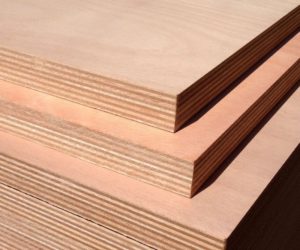
I truly believe there is not a finer made panel out there, and this is one of the reasons we have built out such an extensive product line with both Okoume and Sapele marine panels. This enables us to solve a myriad of our customers’ problems, especially when you add in the ability to customize the face veneers to meet the specific project need. This flexibility is of utmost importance in the marine industry, where everyone not only has exacting standards, but each builder has a different set of needs and internal standards.
When it comes to plywood, being able to start off with a rock solid, stable core is key, but having a lightweight option and a denser, harder, and stain grade option gives us a modular approach to address the entire spectrum of needs.
For Example
We have a marine customer who was using Teak and Holly plywood, but they were increasingly unhappy with the quality of the face and the inconsistent Birch core quality. We supplied a sample of Teak and Holly Bruynzeel on the Okoume core, and the customer was thrilled with the face and the high quality core.
Bruynzeel offers us the option for face veneers with many different thicknesses. It allows us to create a panel perfectly matched to the customer’s usage. Sometimes we need a face veneer the same thickness at the inner plies (usually around 1.5 mm), so the result is a much higher quality and balanced panel. Other times this extra thickness isn’t necessary for wall mounted panels and we will lay out a panel with a thinner veneer. Sometimes its not about the thickness of the veneer but the orientation. In this case we took extra pains to make sure the Teak and Holly face was center matched with a narrower strip on the edges that could balance out with an adjacent panel or be sawn off and butted to the next panel to keep the same spacing pattern.
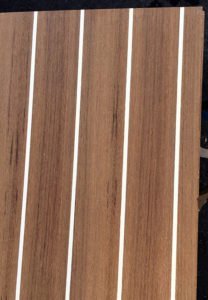
When this customer told us that these panels would be used for flooring, we knew immediately that it wouldn’t stand up to the abuse. Even when we used a thickner 1.5 mm face veneer and despite the 1000 psi Janka rating of Teak, that face veneer only equaled about 1/5 of the total panel thickness. Previously, they had used a Birch core, and that is more than 3 times harder (1200 psi Janka) than the Okoume.
Once we had all the information about how the customer planned to use the plywood, the solution was obvious, and we suggested working with our other marine panel by Bruynzeel that is 100% Sapele (1510 psi Janka). This product (called Super Hechthout by Bruynzeel) is made with the same exacting standards as the Okoume (Hechthout) panel, but instead of Okoume, it is all rotary cut Sapele. Like the Okoume, there are no seams or patches, and the panel carries the BS1088 rating and Lloyds registration. But you can imagine the durability difference that comes from building these panels out of such a substantially denser and harder species.
We combined the superior Teak and Holly veneer, which that customer already loved, with a Sapele core, and we had a product that resulted which was harder and more durable than their original product that was already giving them quality concerns.
Needless to say, this customer is thrilled, and they have become true believers in this Bruynzeel modular approach just like us. This was an interesting opportunity for us, and it illustrated again how having all the information about how the plywood (or lumber) is to be used can enable us to customize the perfect solution.
We feel pretty strongly that these two types of marine grade panels can cover the gambit of marine construction:
- A homogenous surface that can be used as a perfect substrate that is lightweight and strong in the Okoume.
- If stain grade is important, then the beautiful deep red face of the Sapele in a highly durable and dense panel that can be used as a stand alone product.
- If something special is needed, we can do a custom panel, where we lay it up with a specialty face veneer based on one of the above cores and picked based on the density, weight, and durability that best suits your project.
The above example is the perfect illustration of how a problem was solved with a custom panel that fit the durability and aesthetic needs of a customer.
Keep these problems coming, we look forward to the challenge!
Learn more about the lumber industry:

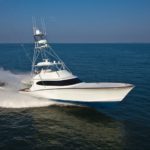
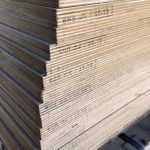
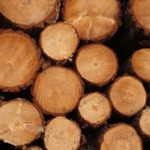
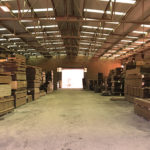
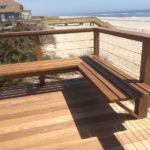
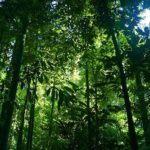


Leave a Reply